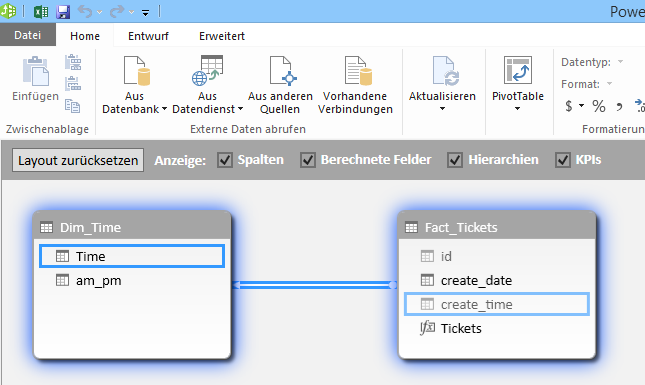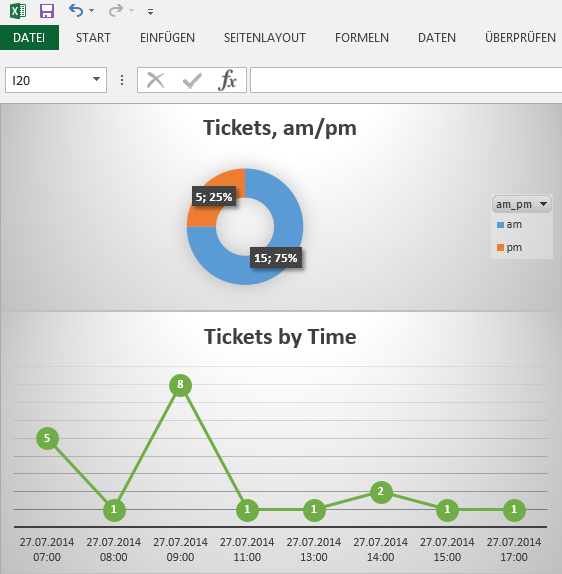In diesem Artikel will ich kurz beschreiben wie man eine Zeit Dimension erstellt und in PowerPivot verwendet. Für eine Datums-Dimension siehe hier.
Als erstes brauchen wir eine Zeit Tabelle:
CREATE TABLE [dbo].[Dim_Time] ( [Time] TIME NOT NULL, [am_pm] CHAR(2) NOT NULL, CONSTRAINT [PK_Table] PRIMARY KEY ([Time]) )
Mit folgendem Script befallen wir die Tabelle:
DECLARE @time TIME = '00:00:01'; DECLARE @ampm CHAR(2); DECLARE @Stop BIT = 0; WHILE @Stop = 0 BEGIN IF @time < '12:00:00' BEGIN SET @ampm = 'am'; END ELSE BEGIN SET @ampm = 'pm'; END INSERT INTO Dim_Time (Time, am_pm) VALUES (@time, @ampm); SET @time = DATEADD(ss, 1, @time); IF @time = '23:59:59' SET @stop = 1; END
Nun können wir die Tabelle mit Daten in PowerPivot (oder was auch immer ..) verwenden:
In this article I will describe, how to create and use a time dimension in a powerpivot model– how to create and populate a date dimension table take a look here.
First we must create the table with the time data:
CREATE TABLE [dbo].[Dim_Time] ( [Time] TIME NOT NULL, [am_pm] CHAR(2) NOT NULL, CONSTRAINT [PK_Table] PRIMARY KEY ([Time]) )
Now we must populate the table with data:
DECLARE @time TIME = '00:00:01'; DECLARE @ampm CHAR(2); DECLARE @Stop BIT = 0; WHILE @Stop = 0 BEGIN IF @time < '12:00:00' BEGIN SET @ampm = 'am'; END ELSE BEGIN SET @ampm = 'pm'; END INSERT INTO Dim_Time (Time, am_pm) VALUES (@time, @ampm); SET @time = DATEADD(ss, 1, @time); IF @time = '23:59:59' SET @stop = 1; END
Now we can use the data in PowerPivot (or something else):


